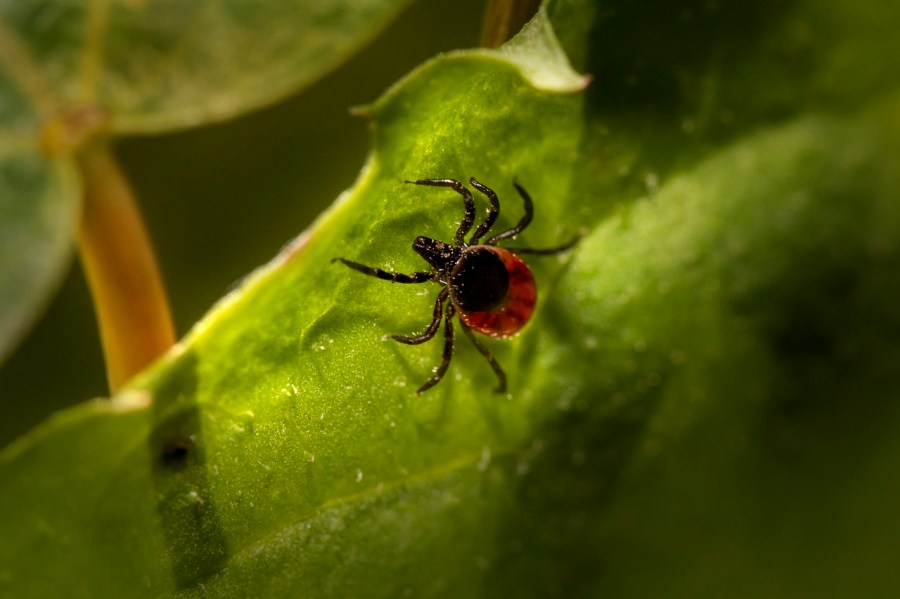After the government announced that a debilitating virus carried by ticks is present in the UK, we run through some frequently asked questions about the effects of tick-borne encephalitis – and the steps you can take to prevent it.
How is tick-borne encephalitis virus (TBEV) transmitted?
TBEV is a virus carried by ticks, small arachnids which are found all across the UK, but particular in woodland, woodland edges, heathland and moorland, and grassland. Their numbers have increased in recent years, in large part due to the increase in the deer population. Hikers, outdoor enthusiasts and people with an active lifestyle are particularly vulnerable to diseases carried by ticks.
What is tick-borne encephalitis?
TBEV is common in many parts of the world, including many countries in Europe. It causes a range of disease, from completely asymptomatic infection, to mild flu-like illness, to severe infection in the central nervous system such as meningitis or encephalitis. Symptoms of this are similar to other causes of meningitis, and can include a high fever with headache, neck stiffness, confusion or reduced consciousness.
How serious can tick-borne encephalitis be?
Encephalitis, the most serious symptom of TBEV, is an uncommon but potentially deadly condition in which the brain becomes swollen. It can be life-threatening and requires urgent treatment in hospital.
Cases of TBEV can often come in two phases. After an incubation period of about a week from an infected tick bite, symptoms appear including fever, tiredness, headache, nausea and vomiting that persist for about five days. The symptoms then go away, but in serious cases some of the infected develop neurological symptoms such as meningitis or encephalitis.
About one-third of people who develop neurological disease go on to have long-lasting symptoms for a year or more like headaches, difficulty concentrating, or memory impairment.
A study of the disease in Sweden estimated it to have a 0.75% case fatality rate.
Is the prevalence of tick-borne encephalitis increasing, and why?
As of 2021, TBEV infected at least 13,000 people annually, but its prevalence is rapidly increasing. The numbers of reported human cases of TBEV in the parts of Europe where it is endemic have increased by almost 400% over the last three decades.
How common is tick-borne encephalitis in the UK?
A government committee yesterday reported that TBEV is likely to be present in England.
The first confirmed case of TBEV acquired in the UK was identified in a 50-year-old man who was bitten by ticks while mountain biking in Yorkshire last year. Before that, the virus had been detected on the borders of Hampshire and Dorset, and Norfolk and Suffolk. The government emphasises that the disease may be present elsewhere given the prevalence of ticks.
How high is the risk?
The government says the risk to the general public in the UK remains “very low” from TBEV, but the UK Health Security Agency (UKHSA) has recommended changes to testing in hospitals so that any further cases can be detected promptly and will be enhancing surveillance – including asymptomatic surveillance in people in the areas where TBEV has been detected.
How can I protect myself from tick-borne encephalitis?
Hikers, outdoor enthusiasts and people with an active outdoor lifestyle should protect themselves from TBEV, along with other-tick borne diseases, by taking precautions to avoid tick bites, and removing the insects promptly when found on the body.
Ticks are blood-sucking creatures which attach themselves painlessly, waiting in ground-level vegetation or the foliage of trees and bushes and clinging to passersby.
Precautions to avoid getting tick bites include:
- Using insect repellent
- Wearing long-sleeved shirts and tops
- Tucking trousers into socks
- Wearing light-coloured clothes to help spot the insect
- Avoiding or being especially careful in wooded areas or places with vegetation like high grasses, thick bracken or heather
You should frequently check your body for ticks and remove them promptly and correctly if found. They will often feed in obscured areas like the backs knees, armpits, groin, hairline or scalp.
Ticks can carry other diseases such as Lyme disease, which these basic precautions will also help to guard against.
(There is also a vaccine for TBEV, but the NHS only recommends it in specific circumstances – see further down this article for more information.)
What is the correct way to remove ticks?
Incorrectly removing a tick can lead to parts of the insect remaining embedded in the skin. Follow these steps:
- Use clean, fine-tipped tweezers or a specific tick removal tool to grasp the tick as close to the skin’s surface as possible.
- Pull upward with steady, even pressure. Don’t twist or jerk the tick; this can cause the mouth-parts to break off and remain in the skin. If this happens, remove the mouth-parts with tweezers. If you cannot remove the mouth easily with tweezers, leave it alone and let the skin heal.
- After removing the tick, clean the bite area and your hands with sterilising gel or soap and water.
- Dispose of a live tick by wrapping it tightly in tape or flushing it down the toilet. Never crush a tick with your fingers.
What is the treatment for tick-borne encephalitis?
There is no ‘cure’ or specific antiviral treatment for TBEV after infection. Severe cases require hospitalisation and supportive care to manage symptoms.
Is there a vaccine for tick-borne encephalitis?
Yes, there is a vaccination for TBEV to prevent infection in the first place. The NHS recommends that you should consider having the TBEV vaccine if you’re visiting a country where the infection is common and you’re planning to do outdoor activities when you get there.







